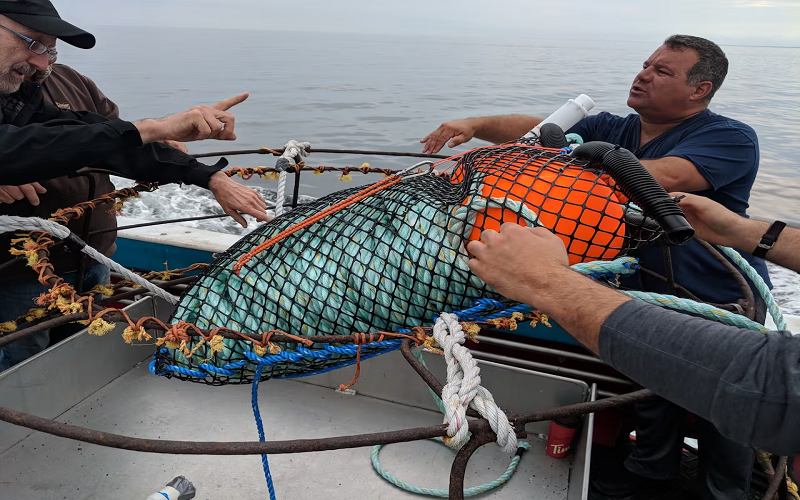Lobster fishing is a time-honoured tradition, deeply ingrained in the maritime culture. For fisheries and seasoned fishermen, pursuing the elusive lobster requires skill, patience, and the right equipment. In this comprehensive guide, we will explore the intricate world of lobster fishing, focusing on the use of ropes and nets to enhance your catch. From understanding the behaviour of lobsters to choosing the right gear, this blog aims to provide valuable insights for both newcomers and seasoned professionals in the fishing industry.
If you want to maximise lobster catches, or any aquatic catches for that matter, having the right set of equipment and following the established SOPs is essential. Each geographic region comes with its own unique set of characteristics and challenges, so a well-drawn-out plan to get the best lobster catches must be based on these factors.
Understanding Lobster Behavior
Before getting into the tools of the trade, it’s crucial to grasp the behaviour of lobsters. Lobsters are nocturnal creatures that primarily inhabit rocky ocean floors. They are known for their solitary nature and territorial instincts. Lobsters are attracted to the bait and are often found in crevices or under rocks during the day. This information is invaluable when strategising your lobster fishing endeavours.
Choosing the Right Lobster Fishing Net
One of the key elements in a successful lobster fishing expedition is selecting the appropriate lobster fishing net. Various types of nets are available in the market, each designed to cater to specific fishing conditions. The most common types include collapsible traps, ring nets, and rectangular nets. Collapsible traps are ideal for rocky terrains, while ring nets work well in sandy or muddy sea beds. Rectangular nets, on the other hand, are versatile and can be used in a variety of settings.
When selecting a lobster fishing net, consider factors such as mesh size, material durability, and size of the openings. Opt for nets with smaller mesh sizes to ensure that smaller lobsters are not inadvertently caught, allowing them to grow and contribute to sustainable fishing practices. Also, durable materials such as nylon or polyethylene are recommended for longevity in harsh marine environments.
The Art of Rigging Fish Ropes
Fish ropes play a crucial role in lobster fishing, serving as both markers and connectors for lobster traps. Rigging fish ropes properly is essential for securing your traps and ensuring a successful catch. Start by selecting high-quality, corrosion-resistant ropes that can withstand harsh saltwater conditions. Nylon ropes are a popular choice due to their strength and durability.
To rig fish ropes effectively, create a series of loops and secure them to the lobster trap. This ensures that the trap remains anchored while allowing for easy retrieval. Properly rigged fish ropes not only prevent traps from drifting away but also aid in identifying the location of your traps, especially in areas with multiple fishermen.
Optimising Lobster Fishing with Fishing Nets
Fishing nets are integral to the lobster fishing process, enhancing efficiency and increasing catch yields. Proper placement of fishing nets can significantly improve the success rate of your lobster traps. Consider setting up nets strategically around rocky formations or areas with known lobster habitats. This proactive approach increases the chances of lobsters entering the traps as they roam in search of food during the night.
Furthermore, the use of rectangular nets can create an effective barrier, channelling lobsters towards the traps. This method not only maximizes catch potential but also minimises the impact on the surrounding marine ecosystem.
Key Strategies for Lobster Fishing Success
Selecting the Right Bait: Lobsters are attracted to a variety of baits, including fish carcasses, squid, and oily fish. Experiment with different baits to determine what works best in your fishing area.
Understanding Tides and Currents: Lobsters are more active during tidal changes. Plan your fishing trips around high tide for optimal results. Additionally, be mindful of currents that may affect the placement and drift of your traps.
Regular Maintenance of Gear: Inspect and maintain your fishing gear regularly to ensure it remains in optimal condition. This includes checking for damage, replacing worn-out components, and cleaning traps to prevent the accumulation of debris.
Adhering to Catch Regulations: Stay informed about local lobster fishing regulations to promote sustainable practices. Abide by size and catch limits to contribute to the conservation of lobster populations.
Conclusion
In the intricate dance between man and the sea, mastering the art of lobster fishing requires a combination of knowledge, experience, and the right tools. By understanding lobster behaviour, selecting appropriate gear, and implementing strategic fishing techniques, fisheries and fishermen can enhance their lobster catch significantly. The careful use of lobster fishing nets and fish ropes not only optimizes the efficiency of traps but also contributes to sustainable and responsible fishing and lobster catches. As stewards of the ocean, it is our collective responsibility to ensure the longevity of this timeless tradition for generations to come.




